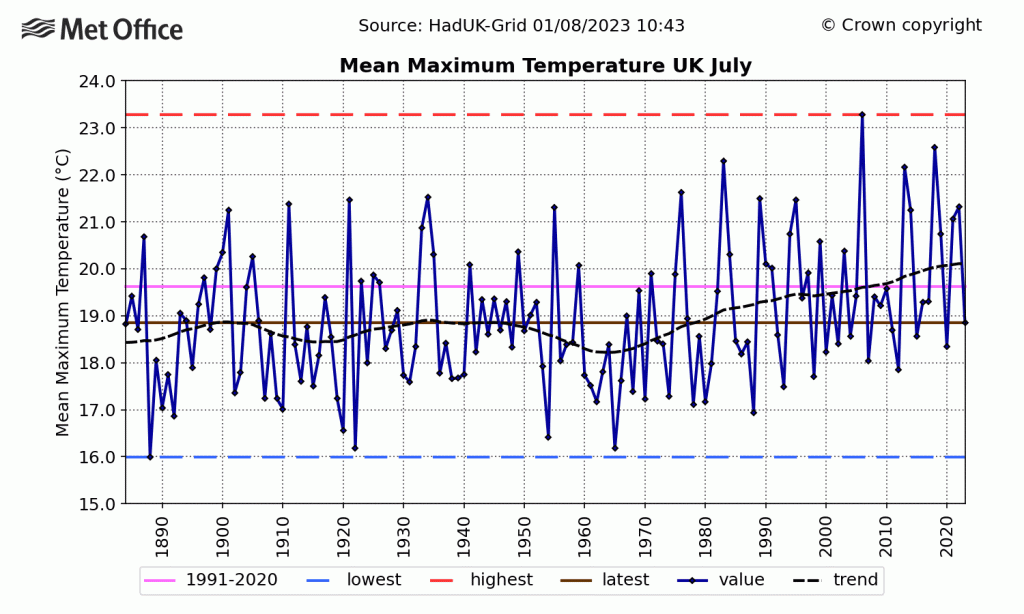The UK is about to hold a July general election for the first time in almost 80 years. Sarah Birch, Erik Asplund, Maddie Harty and Ferran Martinez i Coma discuss why the risk posed by extreme heat could affect the conduct and outcome of the voting process.
It was a chilly start to the summer, and if this trend continues, a brisk walk to the polling station on 4 July could be a welcome means of warming up. But the mercury is slowing rising and a heatwave could be just around the corner. Many will have vivid recollections of sweltering in the 40-degree temperatures experienced in the UK for the first time in July 2022, resulting in a red alert for ‘extreme heat’ from the Met Office and ‘do not travel’ advice from Network Rail. Late July is historically the hottest time of the year, with the early part of the month not far off. The average high in July was 19 degrees a generation ago; it is now over 20 and rising, as shown in this Met Office graph:

The above image contains public sector information licensed under the Open Government Licence v3.0.
So when Prime Minister Rishi Sunak called an election on 22 May, people may have wondered what was in store, especially as news was just coming out of temperatures nudging 50 degrees during polling in India, with dozens of poll workers dying as a result.
This is not the only recent election that has been hit by scorching weather. Campaigning in the US presidential election has recently been affected by heatwaves in the south-west, and unusually high temperatures shaped the June Mexican elections, the European Parliament election in Romania, the April election in the Maldives, last year’s snap parliamentary election in Spain, and the 2022 legislative elections in France, among others.
Continue reading